4 Days in Kuala Lumpur: Ultimate Travel Guide
Are you planning a short trip to Kuala Lumpur? This complete 4-day itinerary for Kuala Lumpur has everything you need to know!
Kuala Lumpur, Malaysia’s vibrant capital, is a melting pot of cultures and experiences. This dynamic city seamlessly blends modernity with tradition, making it a unique city destination!
TIP: Many locals refer to the city as “KL” for short.
I spent five weeks in Malaysia’s capital and got to know the city well. From my visit, I’ve put together the best of Kuala Lumpur and created a helpful itinerary for your visit, enjoy!
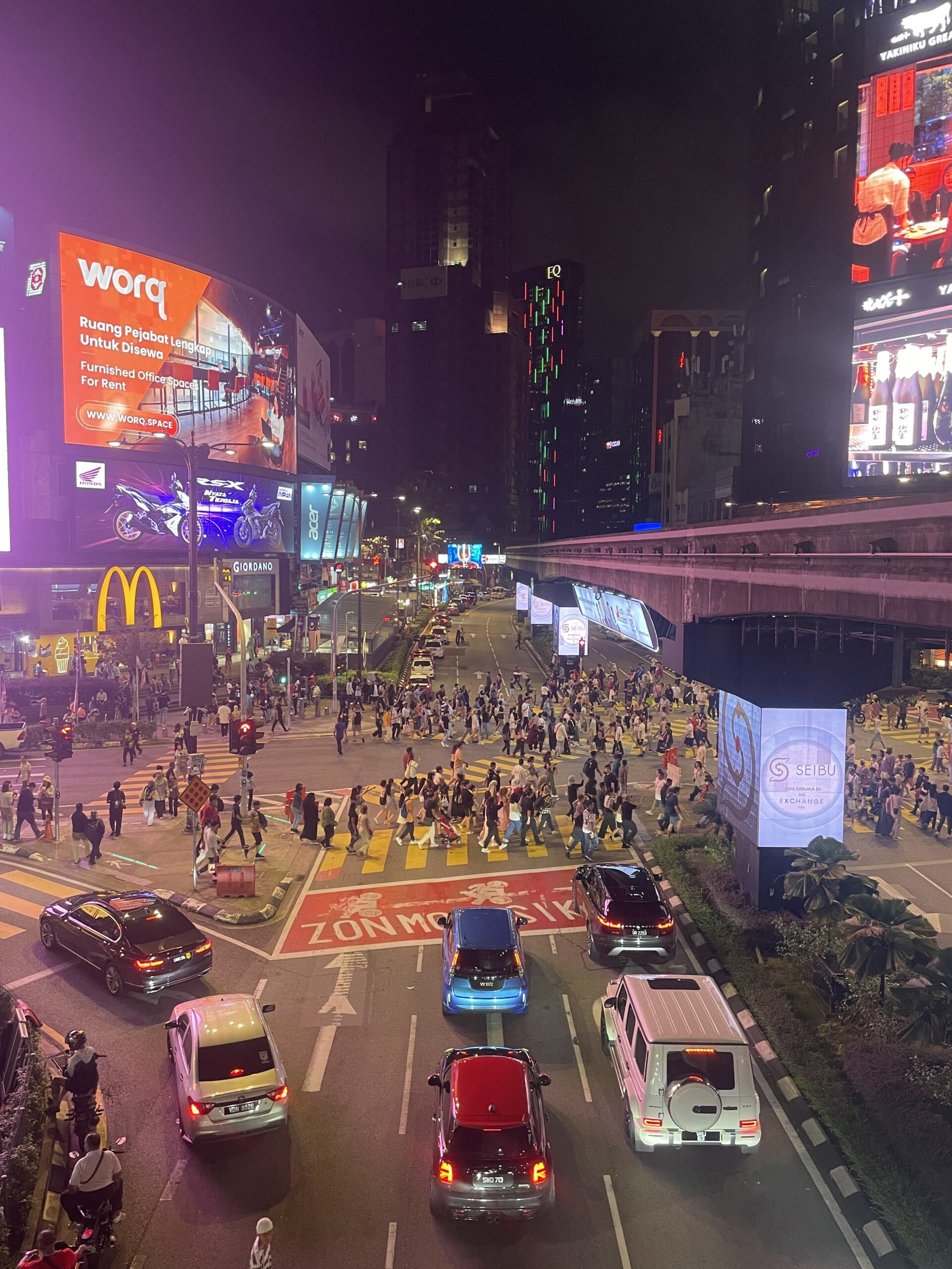
Day 1 in Kuala Lumpur
Are you ready to start exploring Kuala Lumpur? Start your morning in Kuala Lumpur by experiencing the city’s local culture at the National Mosque, and shortly after, you’ll visit one of the city’s largest markets.
In the afternoon, you will visit Merdeka Square, where you’ll find many iconic old buildings. Later, you are off to Jalan Food Market!
National Mosque of Malaysia
The National Mosque of Malaysia is an architectural masterpiece that can accommodate up to 15,000 worshippers at a time. Also known as Masjid Negra, the mosque was built in 1965 to symbolize Malaysia’s majority religion, Islam.
With its impressive modern design, spacious halls, beautiful prayer hall, and striking blue dome, the mosque offers many picture opportunities.
It’s free to enter the National Mosque, but you must check in at the counter.
NOTE: The mosque is closed on Fridays for tourists. You cannot visit on Fridays.
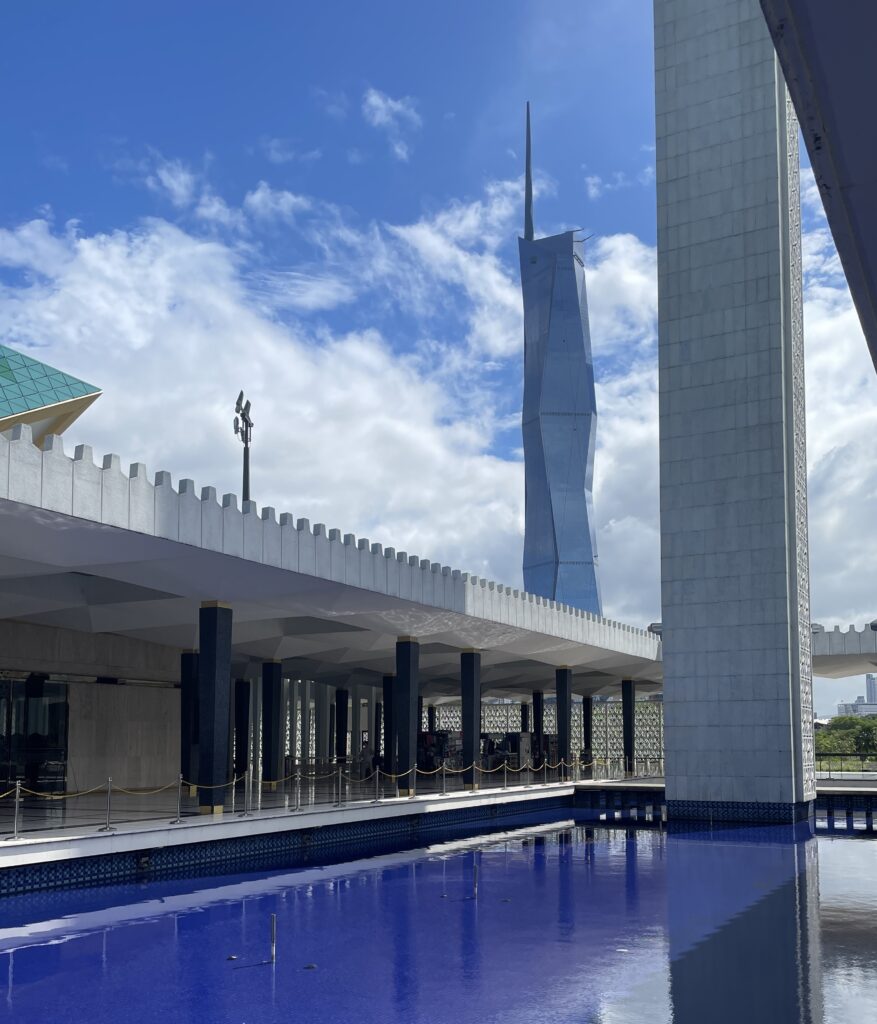
Central Market
KL’s Central Market is a bustling indoor market offering a wide variety of textiles, clothing, bags, jewlery, crafts, souvenirs, and more. By the way, make sure to bargain when buying!
Due to Malaysia’s diverse cultures, you’ll find goods and items in Malaysia, China, and India. There’s also a food court in the market offering various foods to try.
Merdeka Square
The famous Merdeka Square is an important landmark for Kuala Lumpur. It marks the place where and when Malaysia declared its full independence in 1957.
It’s a very picturesque area, day or night, and you’ll spot a large, tall Malaysian flag flying. Several other significant heritage buildings are also there, including the Sultan Abdul Samad Building. Also nearby are the National Textiles Museum and St Mary’s Anglican Cathedral.
Jalan Alor Food Street
Time to visit Kuala Lumpur’s most vibrant street food market. After 5:00 PM daily, the Jalan Alor Food Market hosts 50+ food vendors and restaurants along Jalan Alor Street.
Along the extensive Jalan Alor Food Street, you’ll find a diverse variety of cuisine, including Malaysian, Indian, Chinese, Korean, and more, from noodle-based dishes to meat skewers, fresh fruit, and the national dish, Nasi Lemak.
The market is open throughout the day, but not as many vendors are there. It’s best to experience the market after 5:00 PM.
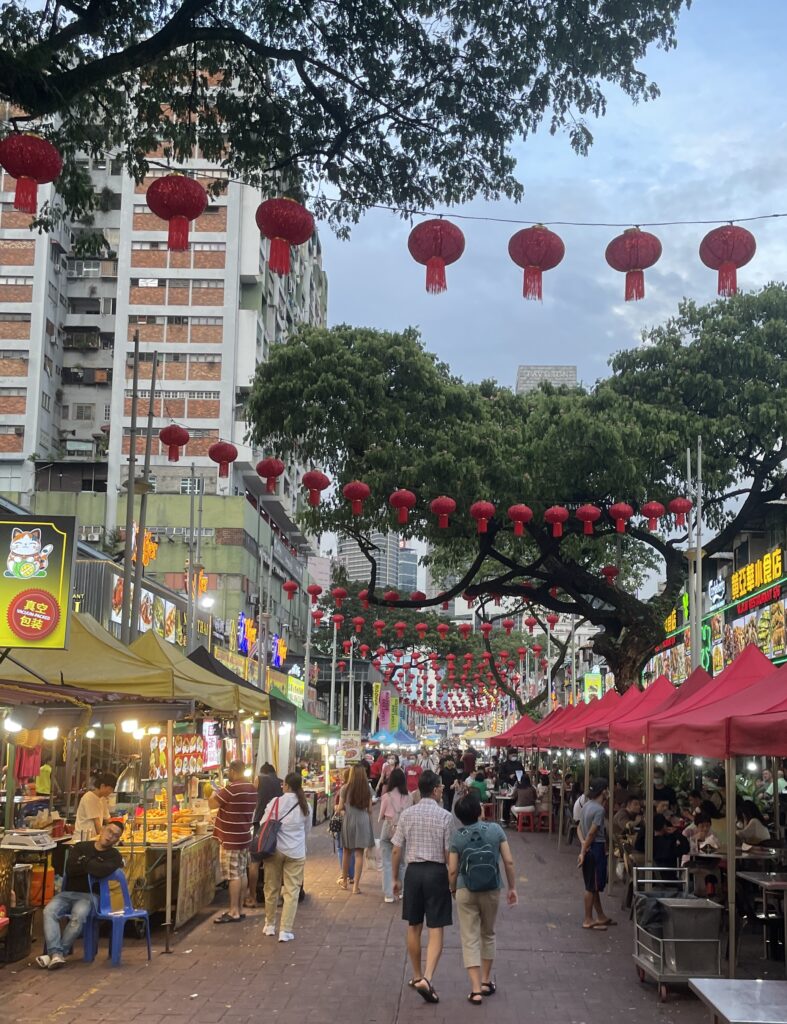
Day 2 in Kuala Lumpur
It’s time to start your second day of adventures in the bustling city of KL. On day 2, you will go on a private half-day tour as you visit the Batu Caves, the city’s most famous natural landmark, followed by a hotsprings and waterfall visit!
After a morning of exploring, you’ll spend the afternoon exploring the bustling Chinatown of Kuala Lumpur.
Batu Caves & Hot Springs Tour
A trip to Kuala Lumpur without visiting the Batu Caves is an incomplete visit to KL. The stunning Hindu shrine is the city’s most popular tourist attraction due to its mesmerizing attributes.
The Batu Caves feature towering limestone formations, colorful steps adorned with monkeys, a 140-foot golden statue of Lord Murugan, and various colorful statues, creating a remarkable sight.
As you enter the cave, you’ll instantly feel the cooler temperatures and notice the sun’s light pealing in!
After the Batu Caves, you will visit beautiful hot springs and an impressive waterfall and explore local Malay villages. This full Batu Caves tour offers the best escape from the city!
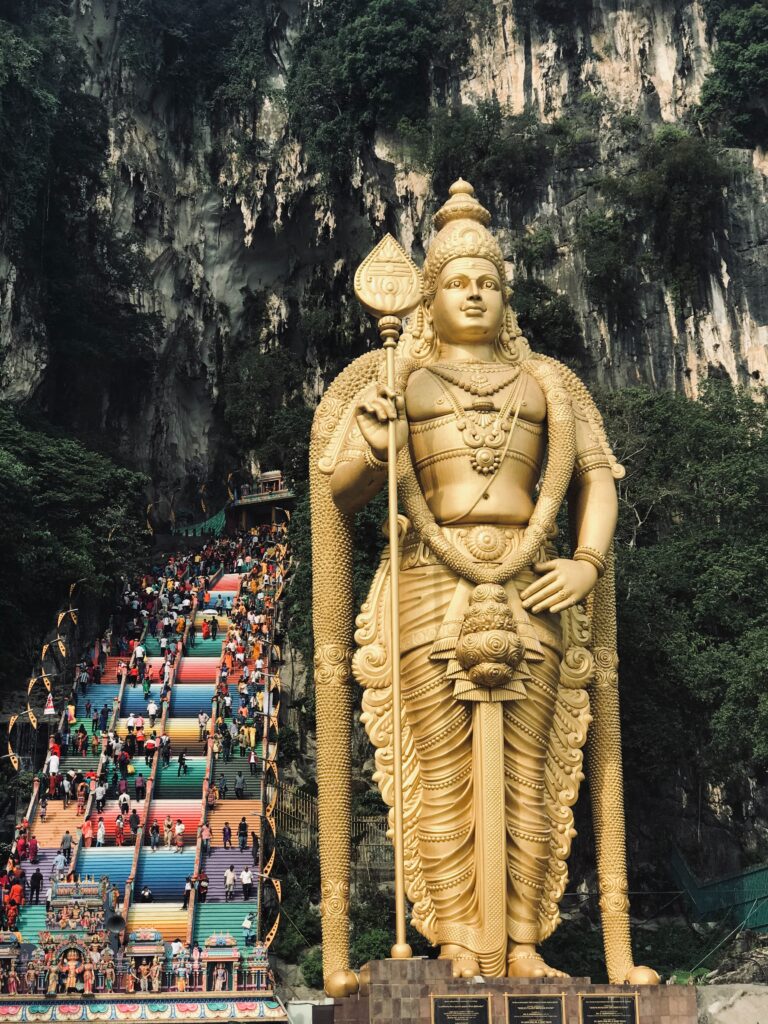
Chinatown Kuala Lumpur
Chinatown in Kuala Lumpur is a must-visit when in KL. The area is home to the famous Petaling Market, many great restaurants, and charming architecture.
Wandering the narrow Petaling street, you’ll find many shopfronts selling everything from souvenirs to spices to counterfeit goods and much more. Make sure to haggle for a bargain if you plan on buying anything!
You’ll also find many street food vendors and local stalls, foods like Laksa (a popular Malaysian soup dish), chicken and rice clay pot cooked on charcoal, dim sum, fresh juices, and much more!
Make sure to visit the REXKL, a cultural center in Chinatown where you’ll find an extensive, beautifully displayed library!
The Chinese have been in Malaysia for a long time, and plenty of Chinese food/culture is ingrained into Malay identity today. KL’s Chinatown is a clear indication of that.
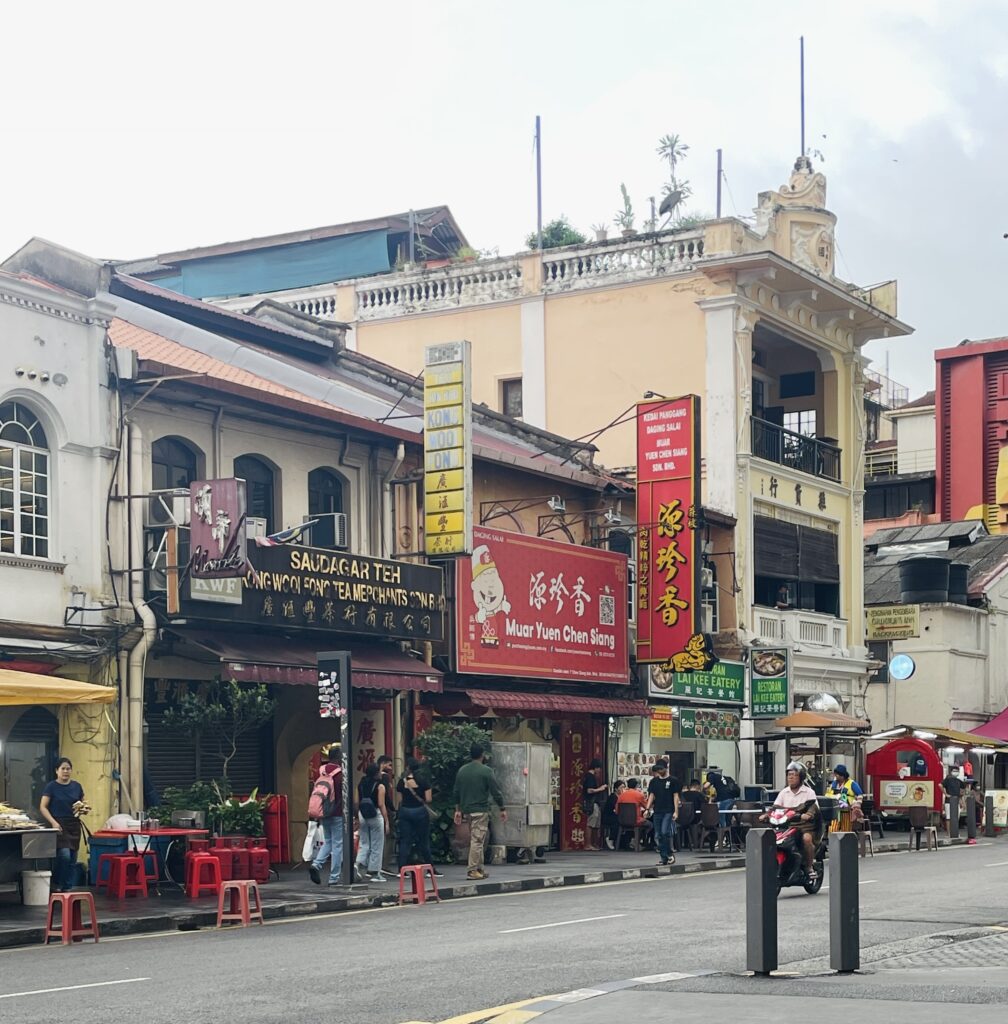
Day 3 in Kuala Lumpur
On your third day in Malaysia’s capital, you’ll start your morning exploring the KL Eco Forest, a natural rainforest section of the city that is being conserved by the city.
In the afternoon, you’ll spend the whole day in KLCC, this city’s most affluent neighborhood. Here, you will find the famous twin Petronas Towers, the KLCC park, sky-high condos, and much more!
Kuala Lumpur Eco Forest
Located in the heart of Kuala Lumpur is KL Eco Park, a lush green oasis among the city’s many concrete towers. The park spans around 45 acres and is home to a bird park, housing many bird species, colorful flowers, and tree types.
The main highlight of the Eco Park is the canopy walk, which allows visitors to explore the park and immerse themselves in its natural surroundings. Walking around, you will also notice the Menara KL Tower, which is impossible to miss as you explore the park.
It costs 10 MYR/$2.15 US per person to enter the park. It’s one of the best cheap things to do in Kuala Lumpur!
Petronas Twin Towers & KLCC Park
Known as Kuala Lumpur’s most affluent neighborhood in the city, KLCC is home to the famous Petronas Twin Towers, KLCC Park, KLCC shopping mall, fine dining restaurants, and the city’s best rooftop bars.
Spend the afternoon taking a stroll at KLCC Park. There’s a trail for visitors around the park, a playground for kids, and you can’t miss the famous bridge, which offers a perfect view of the Petronas Towers.
Follow up with visiting the inside of the Petronas Towers and seeing exceptional panoramic city views! The area’s luxury shopping mall, Suria KLCC, offers many dining and shopping options.
For those visiting with kids, consider checking out the Aquaria KLCC, the city’s largest aquarium.
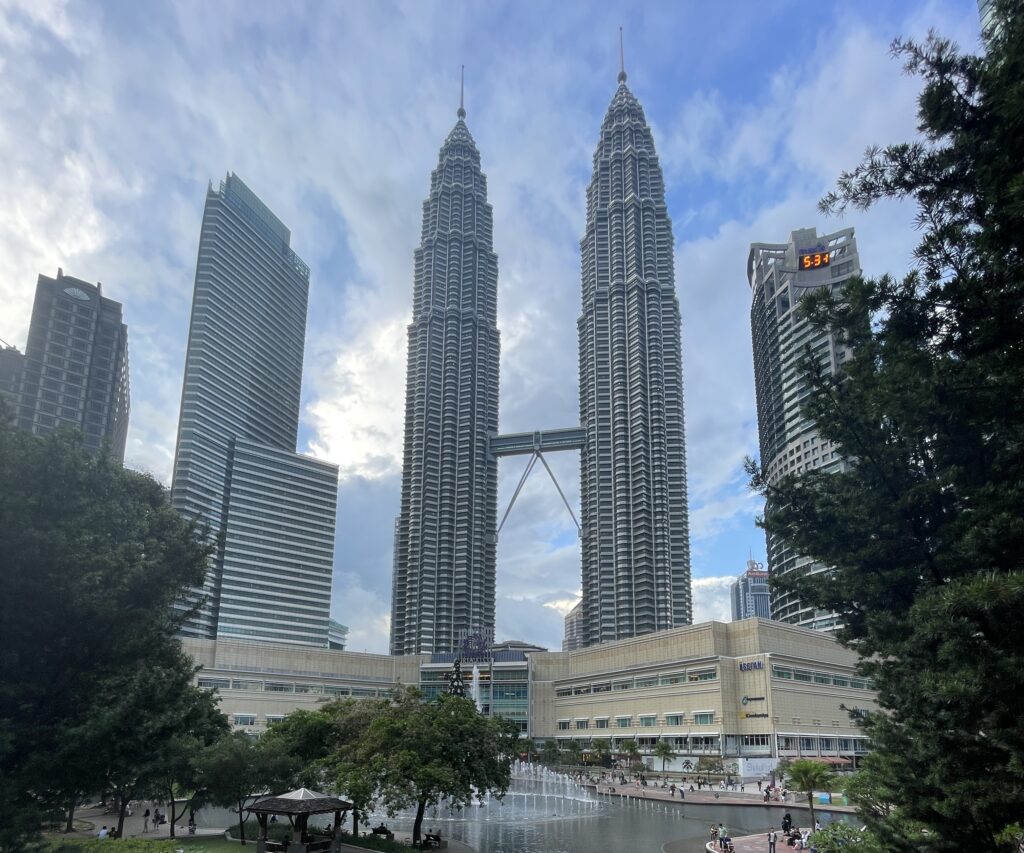
Visit a Rooftop Bar
To end your third day in Kuala Lumpur, after dinner, visit one of the many exceptional rooftop bars in the city. KL is known for its rooftop bars, and due to its impressive skyline, visiting one is a must-do when visiting!
As mentioned earlier, KLCC boasts some of the best rooftop bars in the city. Here are two recommendations for top rooftop bars in the area: SkyBar and Marini’s on 57.
Another excellent option is the Heli Lounge Bar, located slightly outside the KLCC area, just a few minutes walk away!
Day 4 in Kuala Lumpur
On your final day in the city, take it easy as you prepare for travel tomorrow!
After breakfast, start the morning exploring the lush Perdana Botanical Garden. In the afternoon, go on an exciting Malaysian food tour.
Perdana Botanical Gardens
Located on the city’s western side, the Perdana Botanical Gardens spans 90 hectares.
The extensive botanical garden features an Orchid Garden, Dee Park, vibrant flower beds, picturesque trails, and much more!
Come take a stroll in the park, buy a few items, and set up a picnic there for lunch!
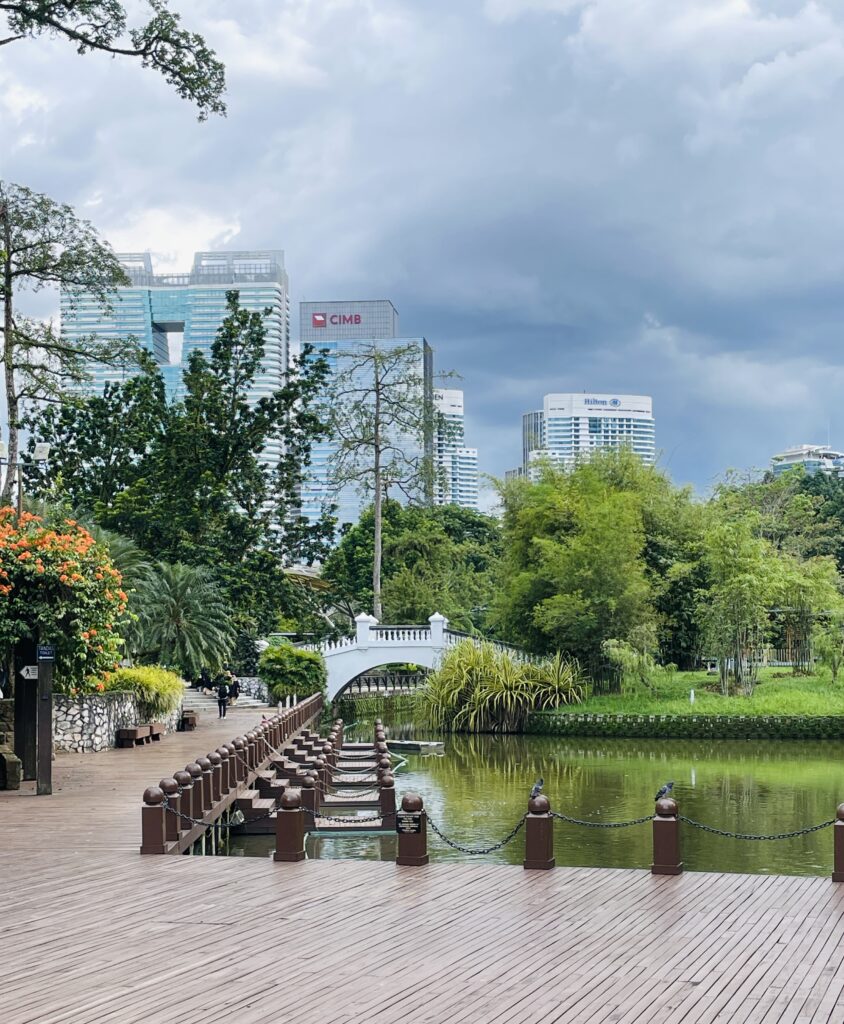
Sambal Street Food Tour
Kuala Lumpur is one of the best food cities in the world because the city is home to three prime ethnicities. Malaysian, Indian, and Chinese cuisine is equally well represented.
Exploring Kuala Lumpur’s many local cuisines is a must before leaving. This top-ranked Sambal Food Tour ensures you don’t miss any of the famous foods!
On the tour, you will try a total of 15+ foods, and the street food tour is done in a small group.
Where to Stay in Kuala Lumpur
- Bukit Bintang: This is the most popular residential district in Kuala Lumpur. You’ll find plenty of shopping malls, a wide variety of international cuisines, cafes/bars, and many tourist attractions nearby.
Pullman Kuala Lumpur: Luxurious modern hotel located right in the center of Bukit Bintang with direct access to the famous mall
Hotel Capitol: A well-priced mid-range hotel near the Jalan Alor Food Street and only a few minutes walk from the Pavillion Mall
- KLCC (Kuala Lumpur City Center): Known as the prominent city center of Kuala Lumpur, this district is home to the world-famous Petronas Towers. It’s also home to KLCC Park, plenty of shopping, and restaurants. Overall, this is the most modern and safest area in the city.
ASCOTT Star: A stunning modern hotel in KLCC offering exceptional rooftop bar views of the famous Petronas Towers, known for its amenities
Ibis KLCC: Located right in the KLCC area, Ibis offers cozy rooms with great city views
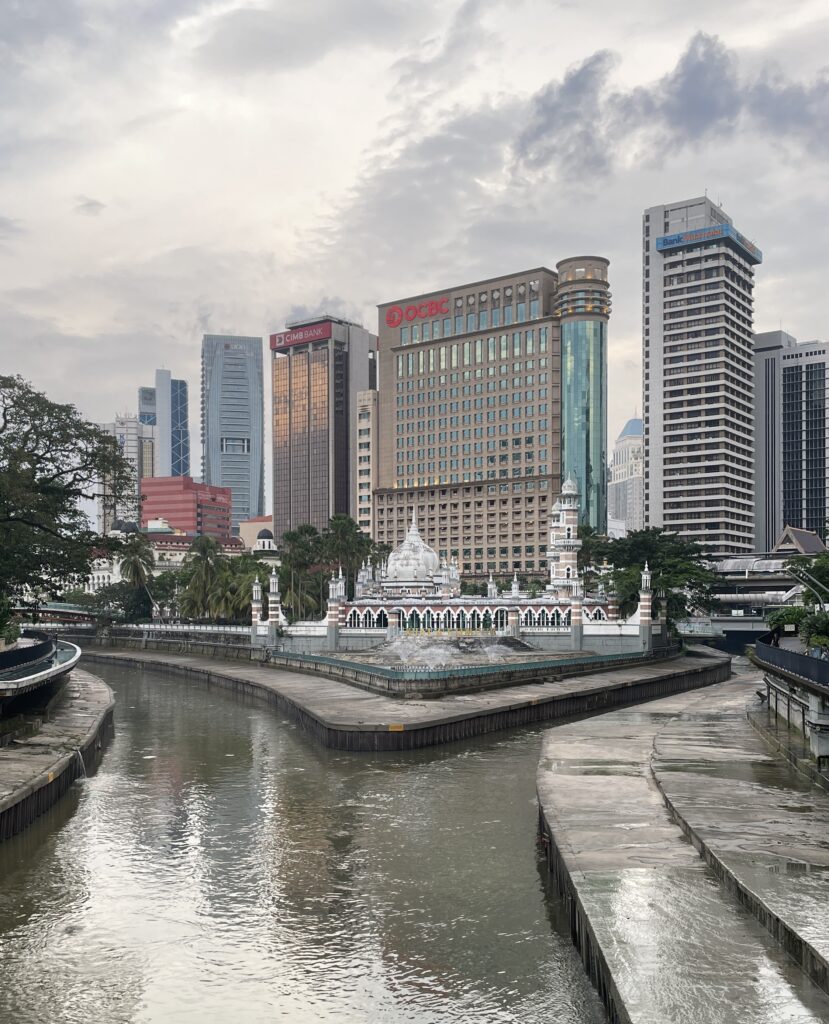
- Bukit Ceylon: Conveniently neighboring Bukit Bintang, this area has several tall residential condos and Forest Eco Park. It’s calmer and quieter than Bukit Bintang, and still Bukit Bintang is only 5-10 minutes away.
Lanson Place: A luxurious 5 star condo-like hotel offering spacious modern rooms, many amenities, and excellent city views
Verdant Hill Hotel: Located in the heart of the city, Verdant is a few minutes walk away from the Jalan Night Market, plenty of restaurants, and the nightlife district in the area
- Bukit Tunku: This upper-class neighborhood is slightly outside the main city center. There are mansions, luxury homes, and a few low-rise condos here. It’s ideal for those visiting with families looking to stay away from the busy city center but still have quick access to it.
Bukit Tunku Villa for Rent: Those opting out for privacy and space outside of the city, this stunning villa for rent is perfect for that
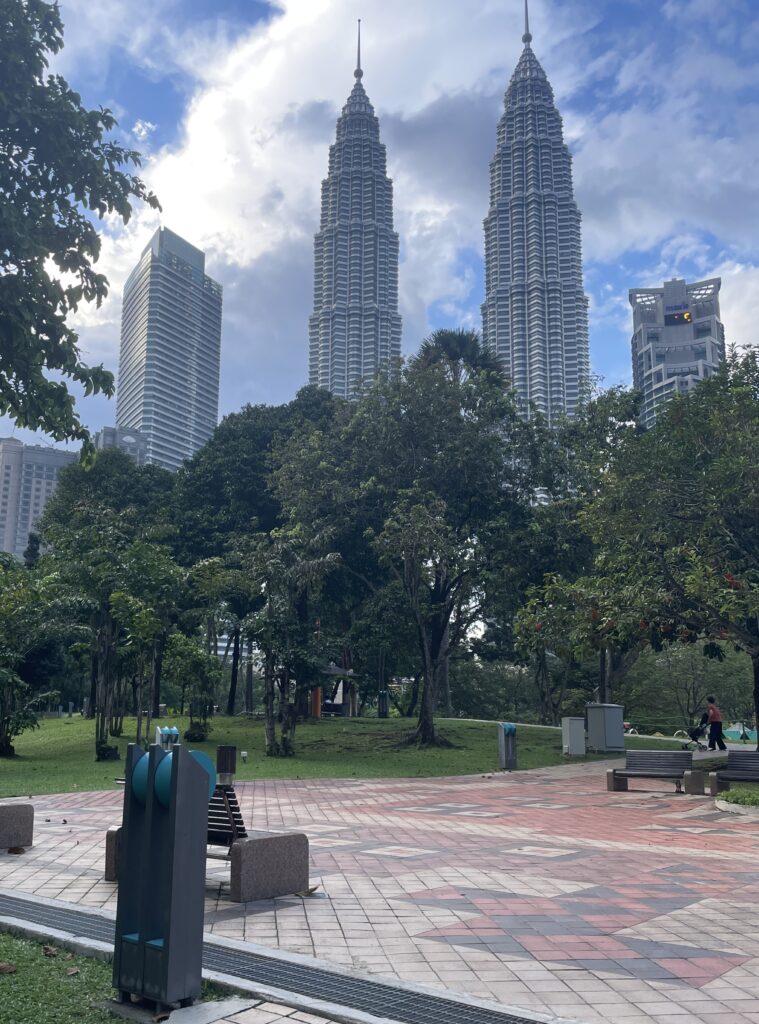
Where to Eat in Kuala Lumpur
Sin Kiew Yee Shin Kee Beef Noodles: A beloved beef noodle shop that’s been open for many years, serving a delicious bowl of beef broth noodles with various cuts of beef
Skillet KL: Serving a wide variety of flavors; here you’ll find Japanese, French, and other cuisine types, best known for their multiple-course meals
El Cerdo: Popular Spanish restaurant best known for its pork shoulder, paella, and more
Halab Gate Shawarma: Ranked one of the best shawarma shops in town, this place serves a delicious sandwich; they’ve also got a section upstairs for dining.
Malaysian Cafeterias: Strolling through the city, you’ll come across neighborhood cafeterias where locals dine. Some are self-service, while others have waitstaff. In these places, you can enjoy Indian, Malay, or Chinese-style cuisines.
Yaki Soul: Japanese Izakaya-style restaurant with a wide variety of plates, best known for its sushi and meat skewers
Dewakan Restaurant: A fine dining restaurant specializing in contemporary Malaysian food with exceptional city views
Lai Foong Lala Noodles: Chinese noodle shop specializing in rich seafood-based soups
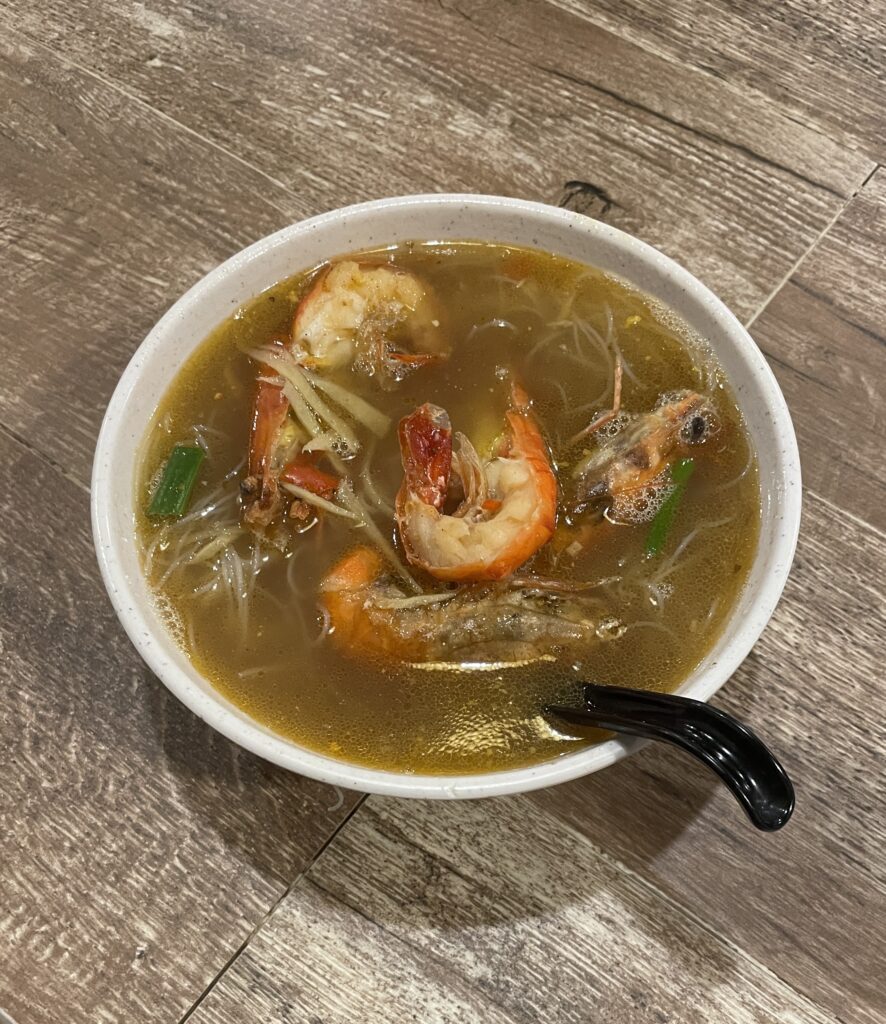
Getting Around Kuala Lumpur
MRT KL & LRT / KL boasts a well-developed network of MRT and LRT lines, making it easy to travel around the city. These trains are efficient and budget-friendly, providing a convenient solution to escape traffic jams. With stops at KL Sentral, Bukit Bintang, and KLCC, you can easily explore the city’s vibrant areas.
Monorail / The monorail in KL is a great way to get around. It’s convenient and serves popular areas like Bukit Bintang, Chow Kit, and KL Sentral. Visitors can easily access malls, attractions, and entertainment with the monorail.
Rapid KL Bus / KL has a great bus network that covers almost every part of the city. However, traffic can sometimes affect bus travel times.
Grab or Taxi / For shorter trips, you can catch a ride using Grab, a well-liked and budget-friendly ride-sharing app. Another choice is to wave down a red and white taxi on the street in KL.
Travel TIP: Watch out for taxi scams in Kuala Lumpur, which occur occasionally in the city.
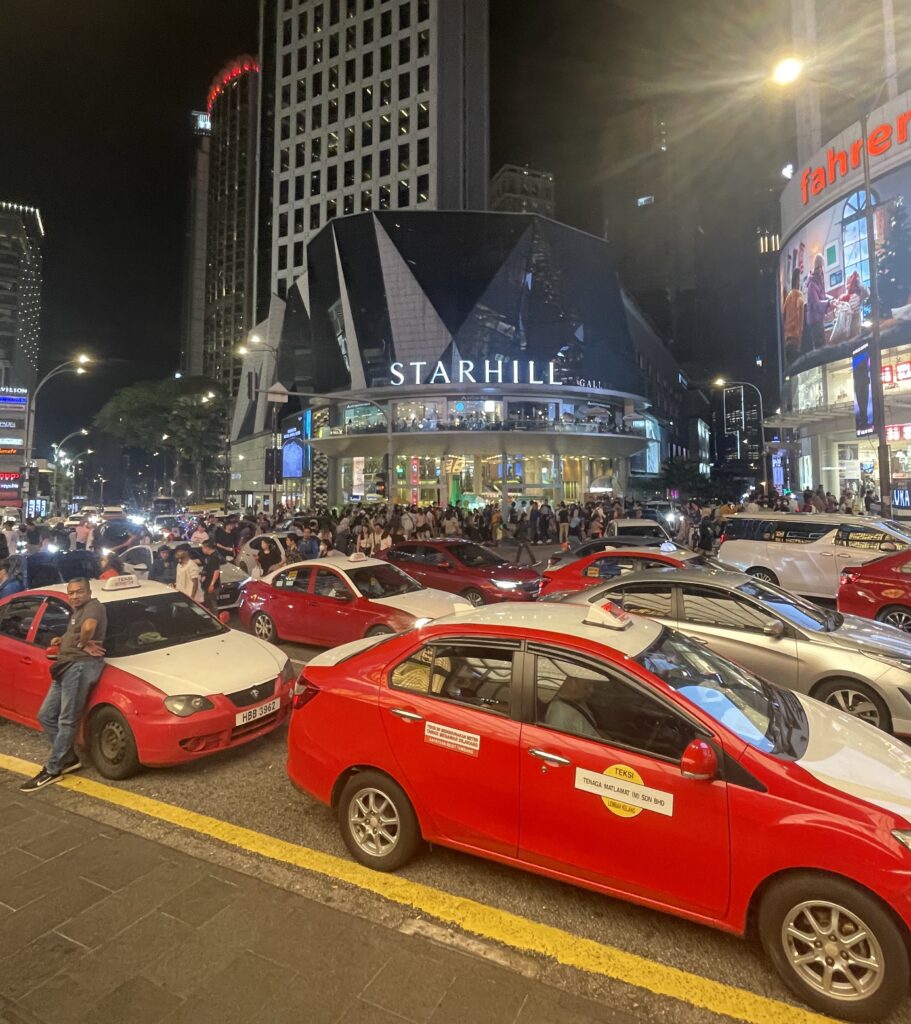
Best Time to Visit Kuala Lumpur
Kuala Lumpur has two significant weather patterns throughout the year. Still, many locals suggest it rains throughout the year, and there isn’t a distinct “best time to visit Kuala Lumpur.” But as the data shows, this is the best and worst time to visit KL.
Dry Season: May to September
The dry season in Kuala Lumpur usually occurs from May to September. During this time, the city gets less rain than in other months. The weather is typically hot and humid, with occasional showers or thunderstorms.
During the dry season, temperatures in Kuala Lumpur range from 28°C to 33°C (82°F to 91°F), so it’s pretty warm all day long.
Monsoon/Rainy Season: October to April
The rainy season in Kuala Lumpur brings in more rain, and the weather can be unpredictable. Some days have short bursts of rain, while others have consistent daily rainfall.
The temperature is generally cooler compared to the dry season in KL, ranging from 24°C to 30°C (75°F to 86°F). However, it won’t feel cool due to the high humidity levels in the city.
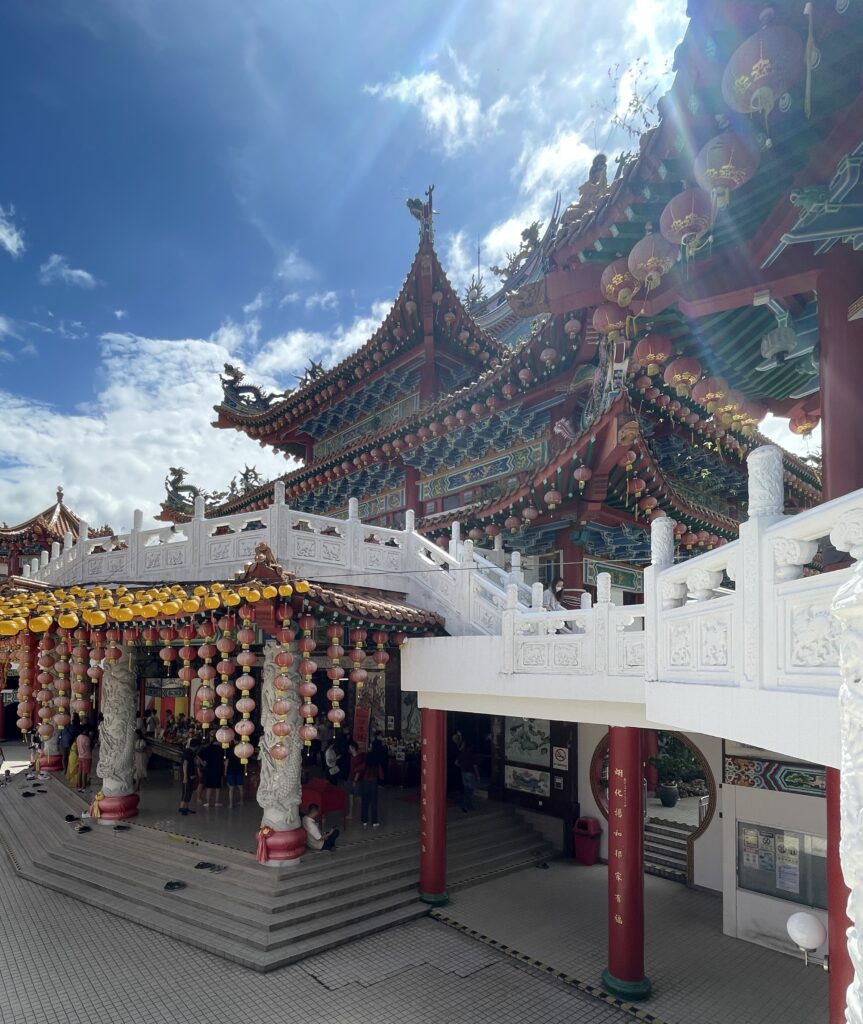
Tips for Visiting Kuala Lumpur
- KL experiences rain throughout the year, so pack a small umbrella.
- Use Grab app; it’s very convenient for Taxis/Food Delivery/Grocery delivery & more.
- Don’t visit in mid-October through January; during this time, it’s the rainy/monsoon season in the city. Kuala Lumpur experiences the most rain during this time of year.
- Ensure taxi drivers use the meter when traveling within the city.
- On public transportation, watch your pockets and bags for pickpocketers in KL.
- Kuala Lumpur offers three main cuisine types, Malaysian, Chinese and Indian, be sure to try all three when visiting.
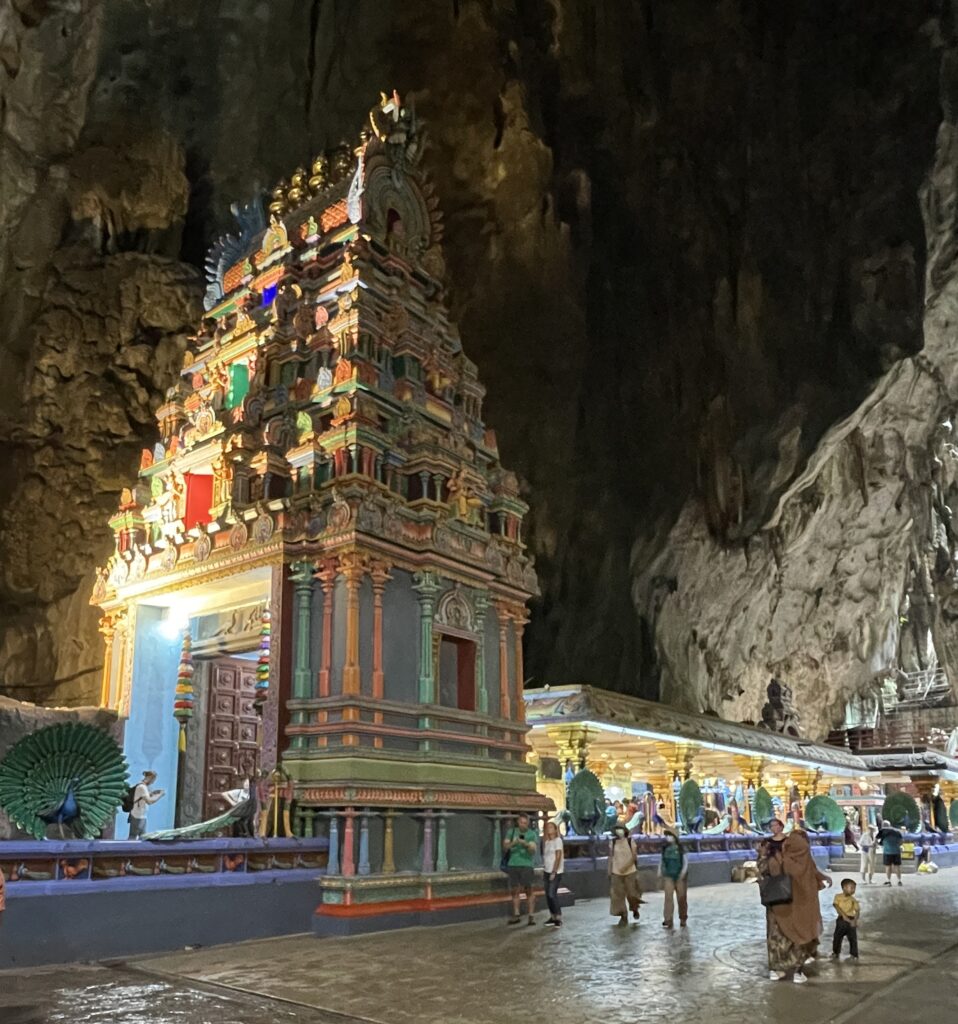
Final Thoughts
There you have it—that’s exactly how to spend four days in Kuala Lumpur! Because of the city’s size and all its activities, visiting KL can be overwhelming, so I hope you put this guide to good use!
One of the best parts about Kuala Lumpur is that despite its modernity, it’s very affordable. Malaysia, as a whole, is one of the cheapest countries to visit!
Another excellent attribute of the city is Kuala Lumpur International Airport’s connectivity. You can fly anywhere from KL and the city’s AirAsia central hub, which means cheap flights in Asia!
Yes it is, four days is an excellent amount of time to experience much of Kuala Lumpur’s attractions, many different areas, cuisine, and more!
Plan to spend four days in Kuala Lumpur. That’s enough time in the city to experience many of it’s main attractions, try the local cuisine and fit in a day trip!
Kuala Lumpur’s dry season is between May and September. During this time, you’re less likely to experience rain during your visit, but it’s still possible.
Happy & Safe Travels
Planning Checklist
- Find the best Hotels/Resorts
- Book a Vacation Home Rental
- Book a fun Tour in the Place you’re visiting
- Find the best Hostels
- Find/Buy the Cheapest Flights
- Get Travel Insurance when traveling
Disclaimer: Please note that some of the links shared in this article might be affiliate links. This means that at no extra cost to you, we will earn a small commission for any sales generated through this article and/or this website.
We recommend products/services we’ve either used or researched thoroughly – Thank you for supporting me so we can continue to share helpful travel content!
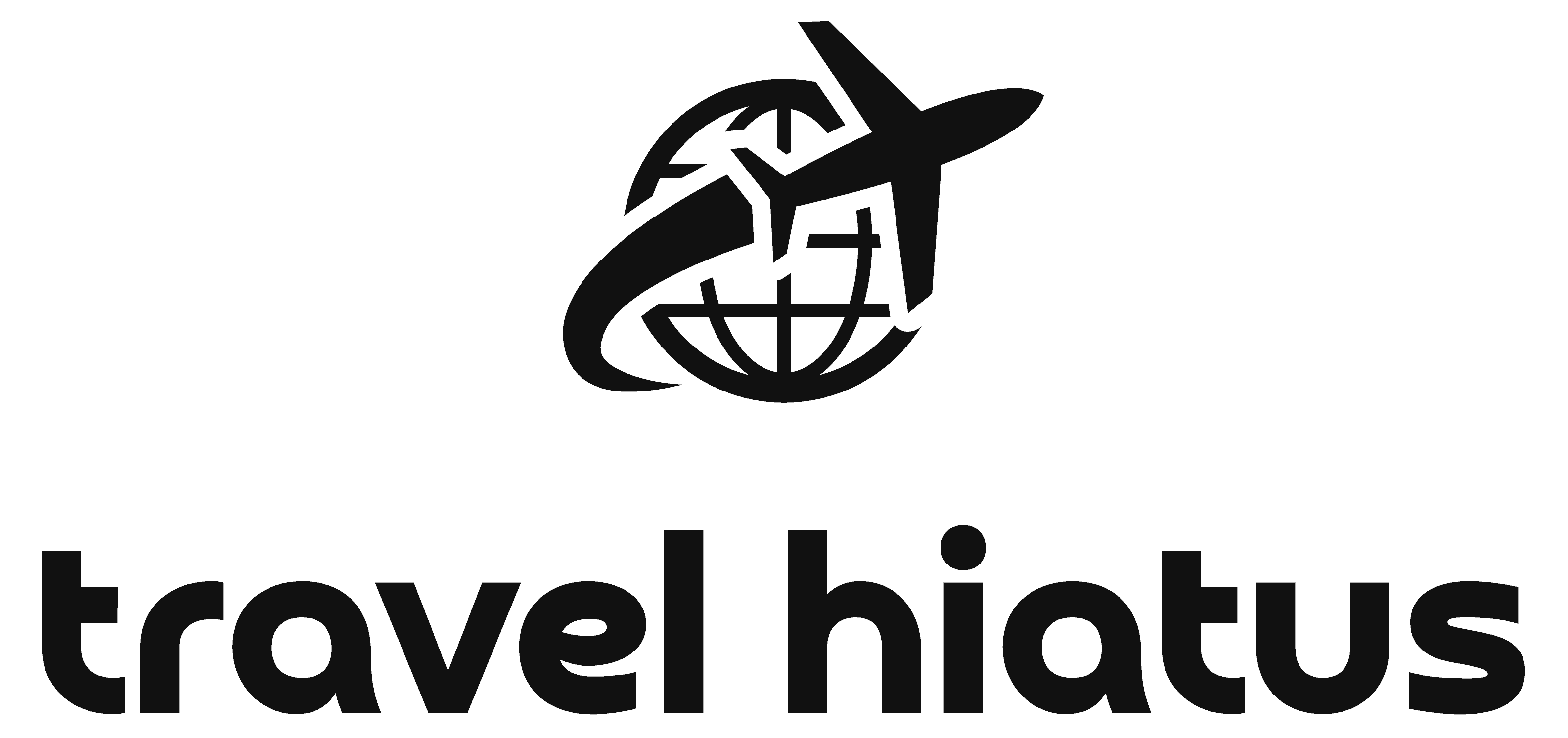
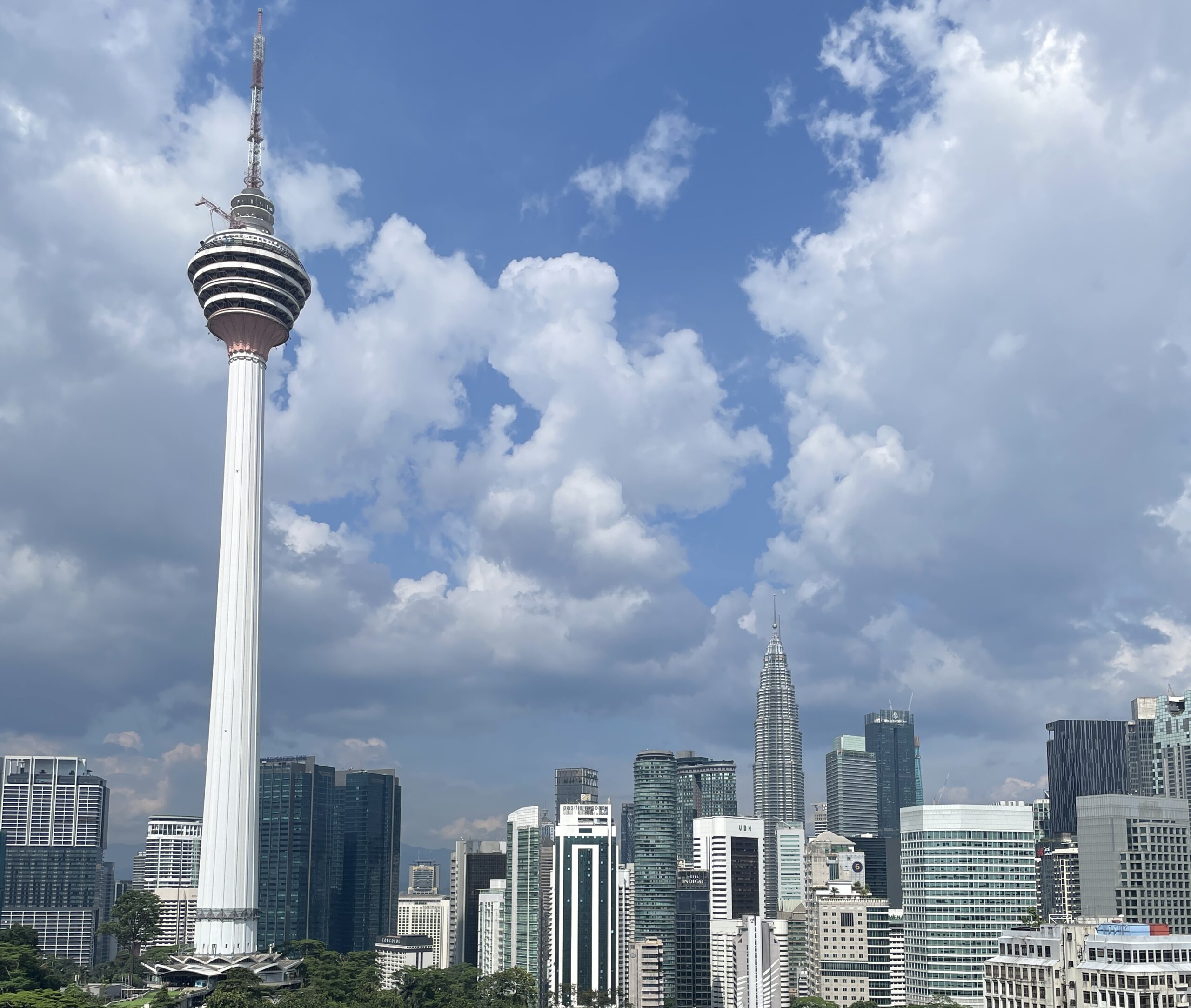
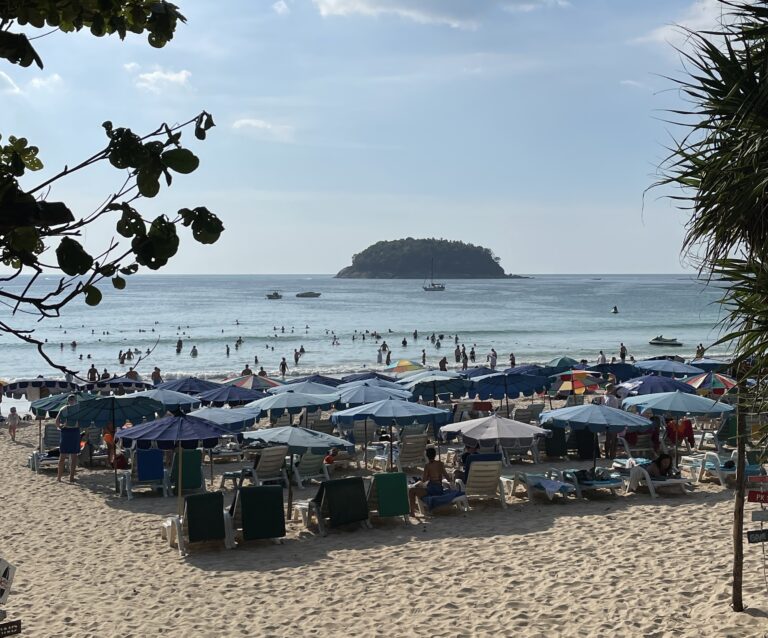

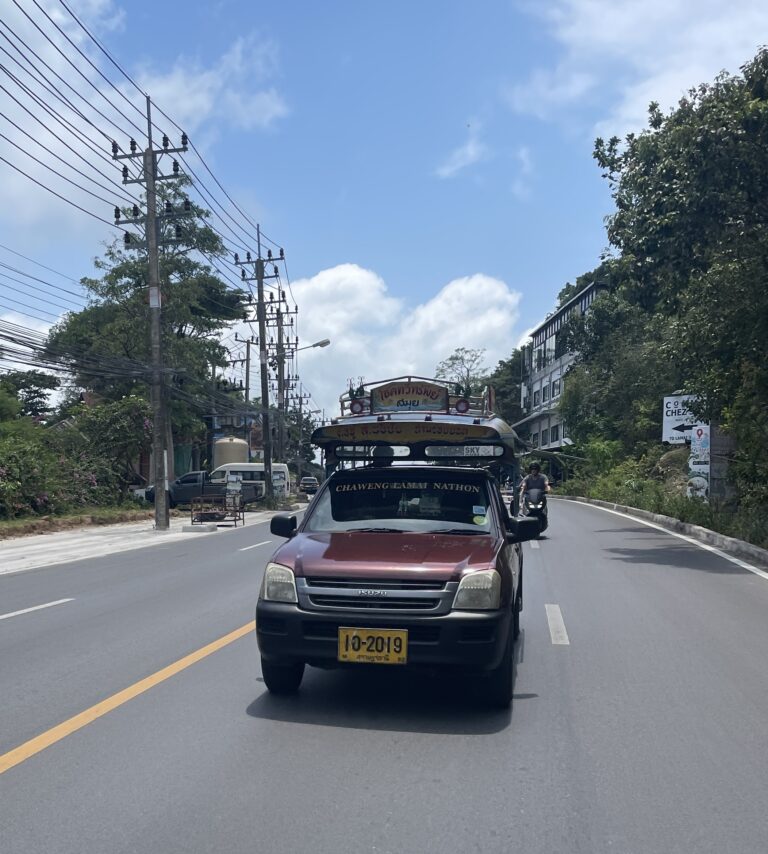
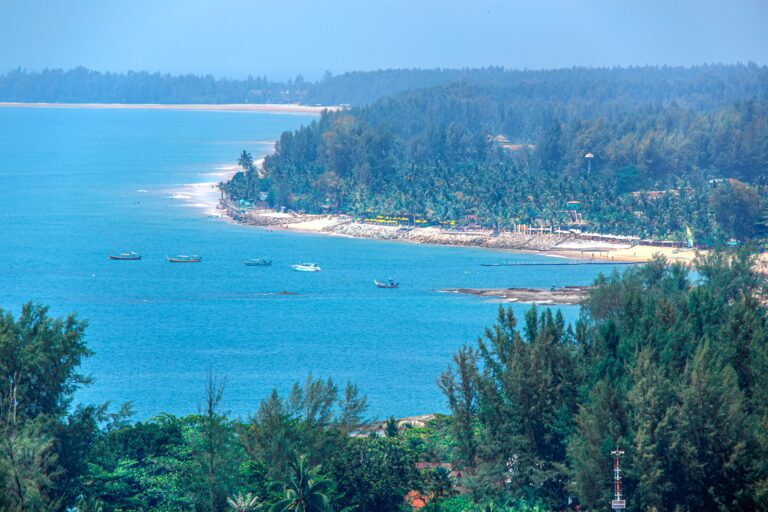
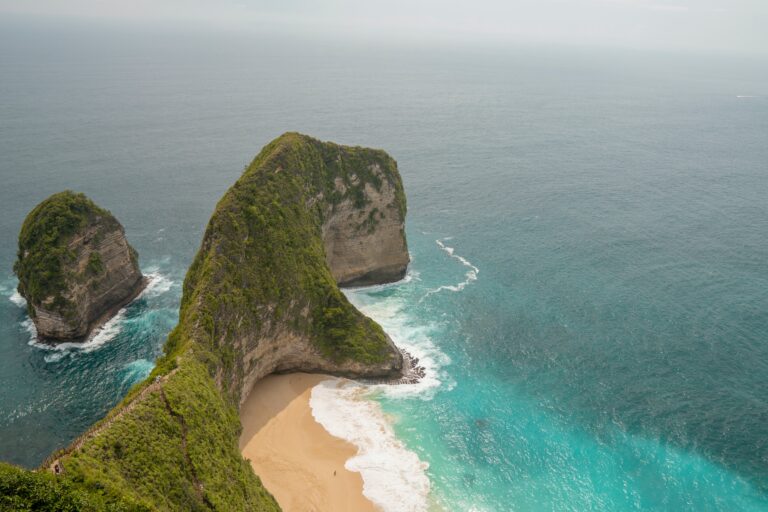
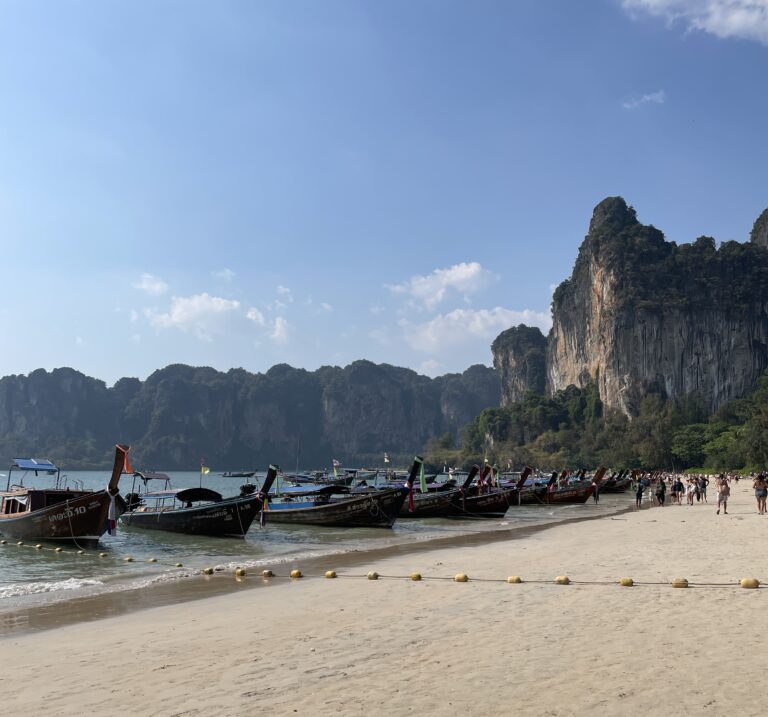
Hi! Malaysian here. Just curious by what you meant by Aksa soup? We do have noodle dishes called Laksa (of which there are many variants) though 🙂
Hello!, Yes I meant Laksa! Thanks for your comment!